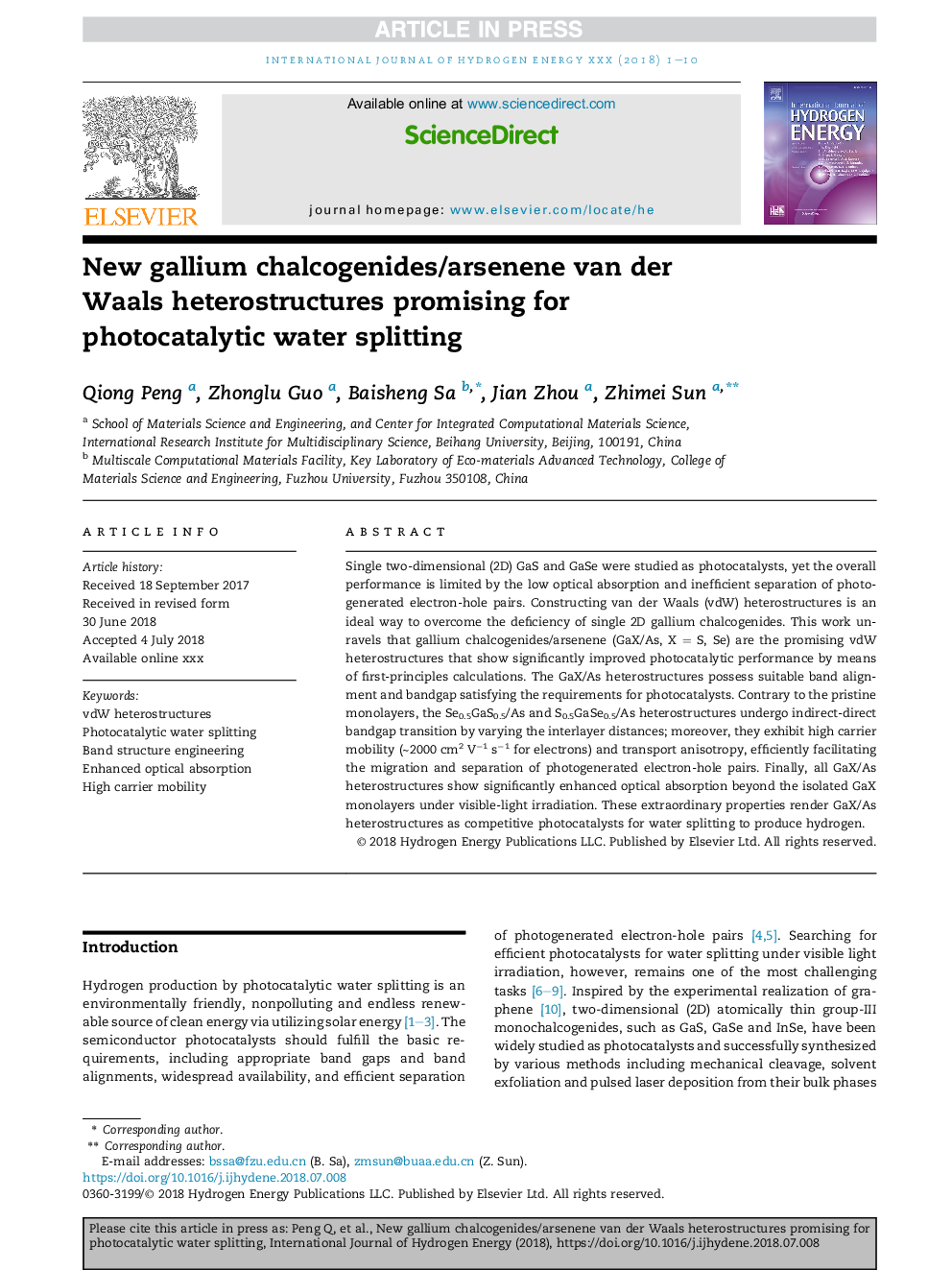| Article ID | Journal | Published Year | Pages | File Type |
|---|---|---|---|---|
| 8961286 | International Journal of Hydrogen Energy | 2018 | 10 Pages |
Abstract
Single two-dimensional (2D) GaS and GaSe were studied as photocatalysts, yet the overall performance is limited by the low optical absorption and inefficient separation of photogenerated electron-hole pairs. Constructing van der Waals (vdW) heterostructures is an ideal way to overcome the deficiency of single 2D gallium chalcogenides. This work unravels that gallium chalcogenides/arsenene (GaX/As, XÂ =Â S, Se) are the promising vdW heterostructures that show significantly improved photocatalytic performance by means of first-principles calculations. The GaX/As heterostructures possess suitable band alignment and bandgap satisfying the requirements for photocatalysts. Contrary to the pristine monolayers, the Se0.5GaS0.5/As and S0.5GaSe0.5/As heterostructures undergo indirect-direct bandgap transition by varying the interlayer distances; moreover, they exhibit high carrier mobility (â¼2000Â cm2Â Vâ1Â sâ1 for electrons) and transport anisotropy, efficiently facilitating the migration and separation of photogenerated electron-hole pairs. Finally, all GaX/As heterostructures show significantly enhanced optical absorption beyond the isolated GaX monolayers under visible-light irradiation. These extraordinary properties render GaX/As heterostructures as competitive photocatalysts for water splitting to produce hydrogen.
Related Topics
Physical Sciences and Engineering
Chemistry
Electrochemistry
Authors
Qiong Peng, Zhonglu Guo, Baisheng Sa, Jian Zhou, Zhimei Sun,
